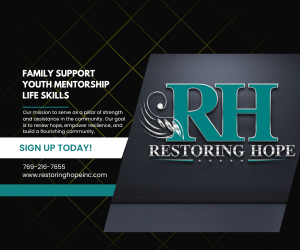You’re listening to Radio Health Journal, the trusted news source for medicine, science and technology. I’m Elizabeth Westfield. I’m Mayan Vasta Betancourt.
And I’m Greg Johnson. This week, the history behind breast cancer awareness. We have to stop being polite.
We can’t be polite anymore. We need to shout and demand that our disease be looked at and funded as well. But first, should parents be able to give their kids growth hormones? You’re just not going to get your child to be 5 feet 10, 6 feet, if they were destined to be 5 feet 5 inches.
All that and more this week on Radio Health Journal. Do Crohn’s disease or ulcerative colitis symptoms keep coming back? Tremphaya, gaselkomab, may help, with rapid remission achieved at 12 weeks and lasting clinical remission at one year. Some even saw visible improvement of their intestinal lining at 12 weeks and one year.
Tremphaya is a prescription medicine used to treat adults with moderately to severely active Crohn’s disease and adults with moderately to severely active ulcerative colitis. Serious allergic reactions and increased risk of infections and liver problems may occur. Before treatment, your doctor should check you for infections and tuberculosis.
Tell your doctor if you have an infection, flu-like symptoms, or if you need a vaccine. Healing is possible with Tremphaya. Approximately 3 out of 10 patients were in endoscopic remission at one year, based on areas visualized on colonoscopy, which may not represent the deeper bowel layer or entire GI tract.
Individual results may vary. Ask your doctor about Tremphaya today. Call 1-800-526-7736 to learn more or visit Tremphayaradio.com. Growing up, there’s always one kid who’s the shortest in their class.
In first grade, second grade, all the way through to junior high. It may well be that they’ll grow up to be normal height, or close to it, but parents often worry that they’ll never catch up. And with height being a commodity today, especially for boys, mom and dad are taking more kids to the doctor to do something about it.
I’d say there’s been a shift from seeing patients who aren’t growing well, of course we still see those, to children who are short or whose parents perceive them to be short. For whatever the reason, people have become much more concerned about their child’s height than there seems to have been in the past. So we see a lot of kids coming in now who really don’t carry the medical definition for being short, but are shorter or relatively shorter than other children their age.
That’s Dr. Lori Cohen, Chief of Pediatric Endocrinology and Diabetes and Professor of Pediatrics at the Albert Einstein College of Medicine. She says even before doctors take a history and check for what might be making a kid short, parents and even kids have already set expectations for the visit. One of the things that I’ve noticed that has changed over the past even several years, I always ask children when they come in their office why they’re here.
And I’m surprised by the number of them who say, I’m here to see if I can have growth hormone. I think that they’re being exposed to children who are receiving growth hormone. And that was never the case.
If you’ve got a disease, growth hormone deficiency, and it’s relatively rare, when I was growing up, people didn’t know anybody who was receiving growth hormone. Now they go off to summer camp and their friends go off to the nurse’s office at night to get their growth hormone injections. However often, there’s nothing wrong with a child at all, and growth hormone will make little difference in how tall they end up.
The problem is that growth hormone is not a solution. The average gain of height in growth hormone is about a centimeter, that’s a third of an inch for every year of treatment. It’s not going to make somebody tall.
And while there is a spectrum between being shorter and being taller, studies that equate being taller to being more successful, you’re just not going to get your child to be 5 feet 10, 6 feet, if they were destined to be 5 feet 5 inches or similar. So I think that there’s this perception that we can give this expensive medication and add several inches of height, and that’s just not the case. And the response is quite variable, depending on the patient and presumably depending on why they’re short.
Why they’re short is often that the parents themselves are short, though doctors like Cohen take a look at everything. We look at the growth charts to assess the growth pattern. We need to take a good medical history, that’s going to include looking for medications that affect growth, birth size, poor diet, signs and symptoms of other illnesses or endocrine conditions.
Family history is really important, parents’ heights, but also siblings and grandparents. About 80% of the difference in height is heritable. We’re also going to take a family history of pubertal patterns, that’s heritable as well.
Both height and puberty are likely affected by hundreds of common gene variants that each have tiny effects. So just we need to look at the whole child. And then after that, we do a physical examination.
That’s going to include an accurate height and weight. I can tell you that I’ve had patients come in for falling off their growth charts and when we remeasured them, their height is fine. Children who lack growth hormone and who are very, very short certainly exist, but Cohen says they’re much rarer than people think, between 1 in 4,000 and 1 in 10,000 children.
Many of the rest are simply late bloomers who will end up more or less normal if given enough time. But sometimes parents don’t have the patience. The stereotypes that we, the beliefs and assumptions that we have about short stature are very powerful.
Even the doctors themselves, the general pediatrician or the pediatric endocrinologist who would prescribe growth hormone. Many of them believe without strong evidence or even weak evidence that to be substantially shorter than average is going to interfere with a person’s quality of life. That’s Dr. David Sandberg, pediatric psychologist and professor of pediatrics at the University of Michigan Medical School.
He spent nearly 20 years examining the psychosocial impact of short stature. I’m swimming against the current, so to speak, by pointing out that the research does not support many of the assumptions and beliefs we have about being taller than average or shorter than average. But are there scars along the way for the child who’s a lot shorter than their classmates? They’re an easy target for name-calling, but the research is mixed.
There are many studies of psychological well-being in short children. A lot of them were sponsored by drug companies. Many of them have biases.
And while some studies do indicate that childhood short stature affects psychological well-being, many others don’t. And also, if psychological problems are present, they’re usually not due to short stature. Studies that have looked at quality of life in short adults, it’s usually normal, and growth hormone therapy doesn’t predictably improve it.
Short children may feel conspicuously small, and their classmates’ taunts of being a squirt may make them feel disrespected. But Sandberg’s research, designed to look like a study on something else to get honest answers, show that big kids accept short kids as well as anyone. Regardless of your height, whether you were significantly above average, average height, or substantially shorter, including those at the first percentile for the general population, they had the same number of close friends.
Whether they were boys or girls and they were very short, they had the same number of close friends. Their friends were just as likely to be very tall as being very short. So there’s a stereotype that we have, you might expect, that somebody who’s very short would hang out with other people of a similar height.
That was not the case. As I said, they had the same number of friendships. They were considered as likable as anyone else, regardless of their height.
As far as reputation, Sandberg admits that classmates sometimes see shorter kids as younger than their chronological age. But they’re not seen as any less athletic than others, and are no more likely to be picked on. However, there’s one big caveat to that.
That’s the opinion of others. Short children may view themselves differently. Perceiving yourself as different from others, even if others do not recognize you as being different, but you yourself may feel different, that is not a good experience.
So in my line of work, one goal is to help the person to differentiate between what they might believe is a disadvantage versus challenges that they might experience people making comments. The approach towards addressing those are really quite different. Sandberg says that a lack of stature may seem so defining to a child that whenever they get teased or picked on, that must be the reason.
So where does all this leave a parent’s pleas for growth hormone for their child? The FDA says synthetic growth hormone, available since 1985, can be prescribed for idiopathic short stature, meaning cause not known. But Cohen says it’s not meant for kids on the fringe of normal. Only the smallest 1 or 2 percent should even be considered.
So as is often the case, the biggest problem for short children isn’t what’s wrong with them, it’s our societal norms. What’s wrong with the rest of us? Short stature is not a disease. It can indicate a medical condition for which evaluation is indicated, and I do urge people who have children who are short or shorter than expected for family or certainly children who aren’t growing well to have an evaluation.
But whether to treat or not treat a short child with growth hormone is a complicated decision. Not all short children should receive growth hormone. It doesn’t mean that all children with idiopathic short stature won’t benefit from growth hormone, but really risk-benefit ratio needs to be taken into consideration.
And really, children who are of normal height, who are expected to be within normal population range, even if that’s going to be on the shorter side for society, really shouldn’t be receiving growth hormone. They’re healthy, and giving them a diagnosis telling them that they’re not going to function well, that’s not a good thing. You can find more about all of our guests on our website, RadioHealthJournal.org. For more behind-the-scenes, follow Radio Health Journal on Facebook, Instagram, and X. This segment originally aired in June 2021 and was written and produced by Reed Pence.
Our lead producer is Kristen Farrah. Our executive producer is Amir Zaveri. I’m Elizabeth Westfield.
Coming up, how Shirley Temple led the charge for breast cancer awareness when Radio Health Journal returns. Ah, that’s the sound of someone who’s misplaced… My debit card. …their debit card.
Where did I leave that thing? Not at the gas pump, or the checkout counter, or the roof of your car. Now, if he has the Chase mobile app, he can use card lock. Wait, I could just lock my card.
Yep, just a few tippy-taps on his phone, and… That sound? That’s peace of mind from Chase. Chase mobile app is available for select mobile devices. Message and data rates may apply.
JPMorgan Chase Bank, N.A., member FDIC. At Charmin, we heard you shouldn’t talk about going to the bathroom in public, so we decided to sing about it. Light a candle, pour some wine.
Grab a roll, the soft kind for a little me time. Charmin Ultra Soft Smooth Tear. Wavy edges for my rear.
So let the softness caress your soul. Just relax, you’re on a roll. Let her rip.
Charmin Ultra Soft Smooth Tear. Charmin Ultra Soft Smooth Tear has the same softness you love. Now, with wavy edges that tear better than the leading one-ply brand.
Enjoy the go with Charmin. 2011 was a big year. Looking at a global scale, NASA ended its space shuttle program just a few months after the world tuned in to the royal wedding between Prince William and Kate Middleton.
For Judy Pearson, 2011’s the year she was a newlywed and about to watch her oldest son deploy to Afghanistan. But these events were quickly overshadowed that April, when Pearson was diagnosed with breast cancer. It was triple negative breast cancer, which is a highly aggressive and, for lucky me, rare kind of cancer.
But I went through 18 rounds of chemotherapy after a mastectomy, 18 rounds of pretty gnarly chemotherapy. It was kind of cool because my son and I exchanged a lot of emails, which I saved, talking about fighting our respective enemies. The diagnosis was a shock, especially since Pearson had recently had her routine mammogram come up completely clean.
It was pure chance that she happened to feel a lump and was brave enough to double check the mammogram’s results. I was living my happy life and literally scratched my chest and found this lump almost in my cleavage. When they took off the breast, not only was that lump there, but there were other tumors within my breast so deeply buried I couldn’t feel them.
But by the time my next mammogram would have happened, my cancer would have spread. No question about it. Even by the time I might have felt something, it would have spread.
So I just figured, okay, I was spared for a reason. What is that? It’s a question that took Pearson down a rabbit hole of research, which led to her new book Radical Sisters, Shirley Temple Black, Rose Kushner, Evelyn Lauder, and the Dawn of the Breast Cancer Movement. It highlights the stories of these three activists and how they pushed for women’s health to be taken seriously.
So when I discovered in researching each woman’s younger life that all three of them almost died and weren’t spared randomly, and what a different world it would have been for all of us truly if they hadn’t been spared from what almost happened to them. I think it’s really important. There’s a quote that I use in the book, but I had used that quote so many times in public speaking and magazine articles about, it was said to a survivor of the sinking of the Lusitania, if you survived, it’s because there’s something else in the world for you to do.
For Shirley Temple, her first near-death experience came at age 11. She was performing live on stage when a woman in the audience stood up and pointed a handgun directly at her. Years later, the actress would fall under another attack, this time from inside her body.
In the 1970s, when Temple was diagnosed with breast cancer, it was common for women to go into surgery for a biopsy and then wake up with both breasts amputated without ever giving their consent. It was called the one-step procedure. A woman was anesthetized, taken into the operating room.
Her lump was removed and analyzed in the lab while she’s still unconscious, and then they would come back and amputate her breast. Or better still, the doctor, almost always a man, would go out to the husband or the father in the waiting room and say, yeah, it’s cancer. What do you think? Should we take her breast? Okay, fine, we’ll do that.
I interviewed an oncologist for a previous book about the cancer survivorship movement, and he said it was ridiculous to force women to go through that kind of a trauma where you are told by your doctor almost routinely, it’s fine, I’m sure it’s going to be fine. And then they would wake up pawing at their chest to see if they still had breasts. And he said it’s barbaric.
After learning about these horror stories, Temple made sure her surgeon knew that she would be making all the decisions about her own body. She cemented this radical request by saying the doctor can make the incision, but I’ll make the decision. The biopsy showed that there was a cancerous part of the tumor and her breast would need to be removed.
Luckily, her doctor was positive it hadn’t yet spread and she didn’t have to undergo a radical mastectomy. It was the standard procedure at that time where doctors would surgically remove a woman’s breasts, pectoral muscles, and underarm lymph nodes. You couldn’t work out.
You couldn’t raise your arm if you didn’t have pectoral muscles. And then some doctors up until the late 80s were still taking some rib cage that was not cancerous or some clavicle. These women were completely debilitated for life.
It was Rose Kushner’s work that helped guide medicine in a different direction. Without Rose, the one-step procedure was still approved by the National Institutes of Health, as was the radical mastectomy, even though there were ways to tell that the cancer hadn’t spread. Those were still best practices at the National Institutes of Health up until 1980.
It was because of a meeting at NIH that Rose went to that she had the opportunity to persuade doctors who’d already decided at that meeting, okay, we’re not doing the radical anymore. She had the opportunity to say, there are many reasons why women need a minute to figure out what their next steps are. Kushner, a journalist, was one of America’s most vocal breast cancer activists.
She openly criticized the medical community in newspapers and on TV. She advocated for women to be an active participant in their medical care. And to understand that the one-step radical mastectomy their doctors may try to push on them was an outdated procedure that had been rejected by physicians outside of America.
During the 1979 NIH Conference on Breast Cancer Treatment, she convinced the panel of physicians to stop the one-step procedure and separate biopsy from operation. Soon after, President Carter appointed her to the National Cancer Advisory Board. And then with regard to Evelyn, the Breast Center at Memorial Sloan Kettering that bears her name is terrific.
Breast Cancer Research Foundation is terrific because they were one of the first organizations to be willing to fund really out-of-the-box ideas in battling breast cancer. The Evelyn H. Lauder Breast Center is continually promoting new prevention and diagnostic technologies, less invasive surgery, and more targeted treatments. Despite the center’s contributions to breast cancer research, Pearson believes Lauder’s greatest contribution to this community is how she was able to raise awareness.
And we toss that word around a lot these days. But in 1993, there wasn’t a lot of awareness of breast cancer. Women were still afraid if they felt a lump, they were afraid to go see what it was because it might be bad.
And so therefore, you know, by the time they did get to the doctor, it was too far down the road. And so early detection, getting mammograms, those kinds of things, educating yourself, those kinds of things are really important. Cancer in general was something no one wanted to talk about, and many still falsely believed that it was contagious.
In fact, Pearson says many people would go as far as to hide their diagnosis because they didn’t want to be ostracized from their community. You could be fired. If you had health insurance, you could lose it.
You couldn’t join the military. You couldn’t adopt children. Childhood survivors couldn’t get roommates at college.
And if you were invited to someone’s house for a cocktail party, you might be served on paper plates with plastic silverware so that it could be disposed of. Because even through a washing cycle, your cancer germs could be passed on to people in that household. I mean, it was it sounds really ridiculous now.
But when you think about it, all those things went well into the 80s. Then specifically with breast cancer, Pearson says there was a lot of shame around losing your breasts and fear that their husbands would leave them. This absence of conversation played a part in the lack of funding and research for breast cancer.
But when the AIDS movement shot to the top of public interest, Pearson says it began to raise questions as to why the same attention wasn’t given to breast cancer. Congress was appropriating millions and millions of dollars to research, all of it very important and very good. But if you were trying to survive breast cancer at the time and you looked at that and you saw that the number of diagnoses between the two diseases were, you know, breast cancer was 100 fold more often diagnosed.
And yet the money dedicated to research was almost 100 fold in the opposite direction. And so these women, Evelyn and other women who were at the ground floor of the breast cancer movement, looked at the AIDS movement and said, we have to stop being polite. We can’t be polite anymore.
We need to shout and demand that our disease be looked at and funded as well. And so using some of the same grassroots activism techniques as the AIDS movement, the National Breast Cancer Coalition and other groups successfully pushed for an increase in federal funding. They were also instrumental in getting legislation passed for health coverage of mammograms.
Pearson chose to focus on these three women to highlight how just a few motivated people can create impactful and lasting change. Her book, Radical Women, is now available for presale. You can find more information about Judy Pearson and all of our guests on our website, RadioHealthJournal.org. For more behind the scenes, follow Radio Health Journal on Facebook, Instagram and X. Our writer-producer is Kristen Farrah.
Our production manager is Jason Dickey. I’m Greg Johnson. Radio Health Journal returns in just a moment.
Presenting, again, Fling’s love story. Dear love of my life. We were on the 12B bus this morning when I caught a whiff.
A scent so fresh, so life changing, I had to find its source. Alas, I didn’t know if you were the woman in the pink freshly washed cardigan or the retired mailman next to me. But I knew one of you was my soulmate.
Ah, the scent of game flings. Try game flings with OxyBoost and Febreze. Progressive knows if you have to choose between everyday life and your RV, RV wins.
Are you going to take the RV to the mountains or go pick up your dry cleaning? RV wins! Are we cleaning the gutters or taking the RV camping? RV wins! Are we getting a new passport or cruising up the coast? RV wins! Don’t forget, you got that trip to Sweden coming up. Oh yeah, passport, then RV. With Progressive, you can bundle your RV with your home or auto and save with a discount and spend more time enjoying those savings in your RV.
Progressive Casualty Insurance Company affiliates and other insurers not available in all states and situations. Summer’s here, get ready for backyard barbecues, trips to the pool and COVID-19? That’s right, COVID isn’t taken this summer off and can actually spread year round. I am Dr. Simone Wiles and as an infectious disease expert, I know this fact surprises a lot of my patients.
The good news is options exist to help treat the COVID virus. Talk to your doctor about whether prescription medication for COVID may be right for you. Learn more at PfizerForAll.com slash COVID-19.
This message is sponsored by Pfizer. Whoa, it’s you, the Capital One bank guy. That’s what they call me.
Mind if I get a selfie? Yeah, sure thing. Say no fees or minimums on your Capital One checking account. Wow, that’s a keeper.
So, where are you heading? I’m off to spread the good news that Capital One helps people keep more money in their wallet with no overdraft fees. You’re the best Capital One bank guy. Hey, mind if I get a selfie? Sure.
Say, Capital One, what’s in your wallet? Terms apply. See CapitalOne.com slash bank for details. Capital One and a member FDIC.
Medical Notes this week. Toothpaste may be the cause of your child’s allergies. An antimicrobial chemical called triclosan has been a staple ingredient in everyday products like mouthwash and clothing for decades.
While its purpose is to reduce bacterial growth, research suggests it may make matters worse. In fact, a study in the journal Environmental Health Perspectives reveals that kids with more exposure to this chemical are more likely to develop eczema and other allergies. A new player in the fight against forever chemicals.
New research in the journal Toxicology and Applied Pharmacology reveals that these substances may be able to be flushed from our system. Scientists believe taking a fiber supplement with meals can reduce your levels of forever chemicals. The supplement acts as a magnet and draws the chemicals out with it as it exits your body.
And finally, an apple a day may help you sleep better. Sleep deprivation can be detrimental to your health. Thankfully, eating more fruits and veggies during the day may be the easiest way to make sure you get your beauty rest.
Just five cups a day has been linked to a 16 percent improvement. The research is published in Sleep Health, the journal of the National Sleep Foundation. And that’s Medical Notes this week.
I’m Mayan Vos-Tibetancourt. Febreze. As a rideshare driver, I love keeping my car smelling fresh and clean.
So when I’m driving, I only trust Febreze Car Vent Clips, featuring three distinct intensity settings. Because it’s that little touch that sets me apart. I can turn the intensity down for subtle freshness, or I can turn it up for when I want lots of scent.
So whether it’s set to low, medium, or high, with Febreze Car, I know my car’s going to smell amazing. Which keeps my driver rating right where it belongs. Picking up! Oscar! Hi, I’m Maria, salon owner.
You know the jingle. Now discover the facts about Ozempic, a GLP-1. There’s only one FDA-approved Ozempic, made by Novo Nordisk.
Learn about the real thing. Talk to your healthcare professional today. Call 1-833-OZEMPIC or visit ozempic.com to view the medication guide and to learn more about Ozempic.
Semaglutide injections 0.5, 1, and 2 milligrams. Thank you for joining us this week, and every week, as we break down the science stories you need to know. You can find all of our past segments and guests on our website, radiohealthjournal.org, or wherever you listen to podcasts.
Follow us on Instagram, Facebook, and X for daily content. And tune in next week for another edition of Radio Health Journal.















